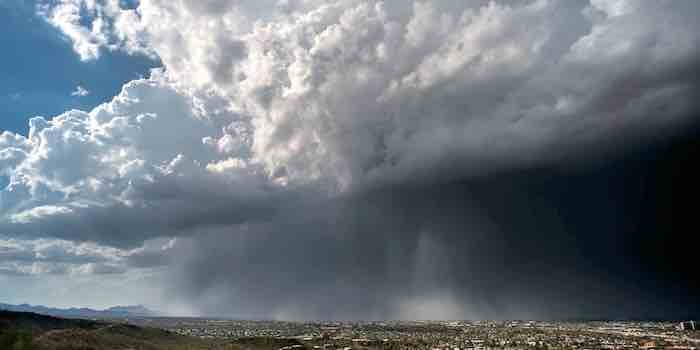By Jack Dini ——Bio and Archives--August 5, 2023
Global Warming-Energy-Environment | CFP Comments | Reader Friendly | Subscribe | Email Us

Climate change prophecy hangs its hat on computer climate models, yet these models have gigantic problems.
With the enthusiasm of religious zealots and the ruthlessness of the power mad, a climate industrial complex is driving energy policy on the basis of a hundred or so badly flawed computer models. More than 95 percent of these digital prognosticators have proven unreliable in predicting climatic trends. Yet, they are used anyhow. (1)
Despite twenty years of media stories telling us how every rain bomb was climate change, a new satellite study of rainfall suggests that in the last 20 years the intensity of rainfall has mysteriously declined a little in most places. This is despite predictions it would increase and CO2 itself rising by 41 ppm globally during the same period. (2)
The study of global precipitation intensity, measured in mm/hour per century has exhibited flat (large precipitation systems) to declining (medium and small systems) trends from 2001 to 2020. The de-intensification of the hydrological cycle has also been documented for the second half of the 20th century. The highest frequency of global scale extreme rainfall events occurred from 1960-1980 when there were concerns about cooling. (3)
Since then, the frequency and intensity of rainfall events have decreased remarkably. (4)
What to do about clouds? Models can't decide if cloud feedbacks are positive or negative. Half think they're positive, the other half negative. (5)
Scientists have determined an error in calculating effects of shortwave cloud forcing on climate spans. Therefore, there is no way to accurately determine anthropogenic CO2's capacity to influence climate.
Even NASA acknowledges that for climate models to be capable of detecting an anthropogenic impact on climate, indeed, for the models to even be useful in long term projections, their capacity to accurately measure radiation from clouds must be improved 'about a hundredfold.' (6)
Comparisons among climate models show that, on the scales required to measure the climate's response to human influences, model results differ dramatically both from each other and from observations.
One particularly jarring failure is that the simulated global average surface temperature varies among models by about 3 degrees C (5.6 F), three times greater than the observed value of the twentieth century warming they're purporting to describe and explain. (7)
Climate models relied upon by the United Nations Panel on Climate Change (IPCC) are known to overestimate warming compared to observations. Depending upon the region, temperature metric and time period, the average model over estimate of warming can be large or small. But nowhere is it more dramatic than in the US Corn Belt during the growing season (June, July, August). (8)
The observed 12 state US Corn Belt summer temperature trend (1973-2022) is considerately less than that produced by all 36 climate models used to promote changes in US energy policy.
The impact of the natural heat exchange by evaporation, or the latent heat transfer from the ocean to the atmosphere is approximately 80 W/m2/year.
Total climate impacts from human green house gas emissions amount to only 0.038 W/m2/year. Thus, Earth's 'natural locomotive ' is about 2,100 times larger than claimed for anthropogenic forcing. It is clearly evident that water is the main element that drives climate, rather than just being affected by climate as commonly thought. (9)
The uncertainties in modeling of both climate change and the consequences of future greenhouse gas emissions make it impossible today to provide reliable, quantitative statements about relative risks and consequences and benefits of rising greenhouse gases to the Earth system as a whole, let alone to specific regions of the planet.
Support Canada Free Press

View Comments
Jack Dini is author of Challenging Environmental Mythology. He has also written for American Council on Science and Health, Environment & Climate News, and Hawaii Reporter.